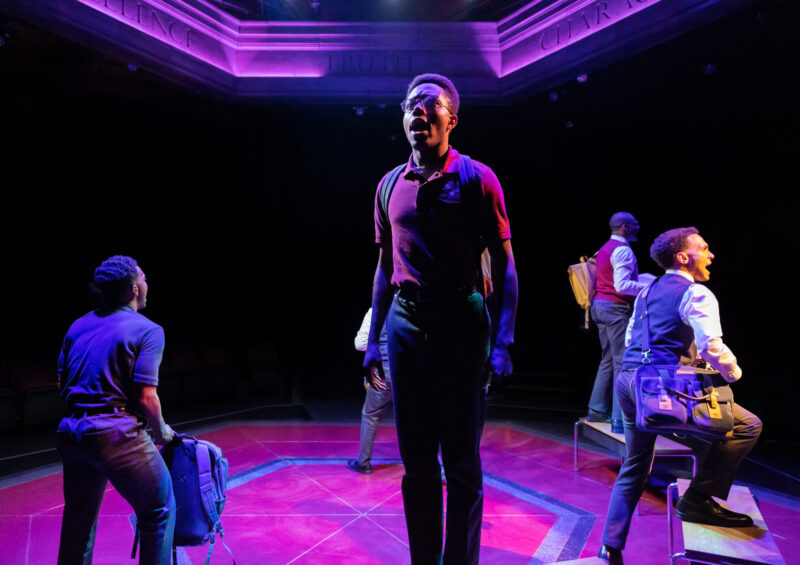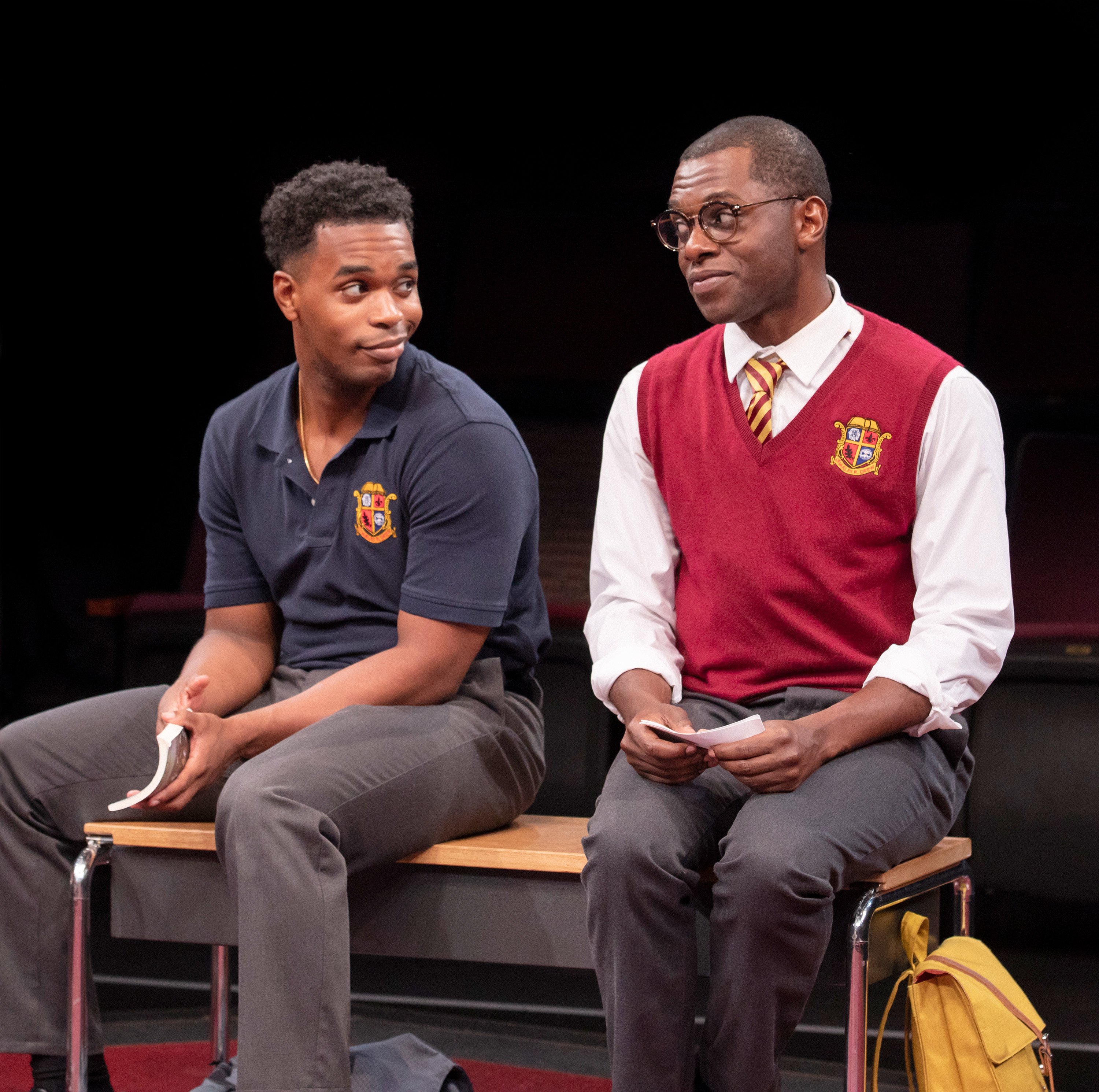The Interpretations and Identities in Choir Boy
Review of Choir Boy presented by ACT Theatre
Written by Teen Writer Amelia Stiles and edited by Teen Editor Disha Cattamanchi

A seat in the second row of ACT’s Allen Theater could not have prepared me more for the intimate and captivating story of Choir Boy. As I sat feet away from the hexagon stage, I was immediately brought into the Charles R. Drew Prep School for Boys’ Commencement Ceremony. Seconds into this opening scene, the space fills with the rich and resonant voice of protagonist Pharus Young (Nicholas Japaul Bernard), the bold and audacious leader of the school’s gospel choir. Choir Boy revolves around Pharus’s sexuality, religious identity, and experience being Queer and Black in an all-male prep school. His story is thoughtfully conveyed through gospel, Step choreography, and innovative set design. I enjoyed the show’s creative visuals, although some of the character choices left me confused.
The unique incorporation of sound made the show a personal experience. Unlike a flashy musical, the songs in Choir Boy are fully a capella. Music entirely created with the human body lets the characters deeply express joy and pain. The absence of an orchestra leaves room for creative ways to fill the space with sound; stomping, clapping, and slamming of benches, and other body percussion are used in each musical number. These are all qualities of a specific African-American dance form, Step. By adding Step into the choreography, Juel D. Lane, the choreographer, creates a complex visual to pair with the powerful vocals on stage. This not only provided the audience with a more raw and personal way to experience the characters’ emotions but also gave a chance for audiences to see a historical Black dance form presented in a modern play. Step, paired with the gospel lyrics, allows the personal stories of each character to be told through their Black experience. The song and dance adds a deeper understanding of the character’s identities. Without explicitly speaking about being Black, the characters can demonstrate how their identity contributes to their stories.
The creative storytelling in this show did not stop at the sound and movement. Halfway through the show, I sat jaw-dropped at the set’s magical transformation into a boy’s shower room. It incorporated real falling water and steam surrounding the stage. It was surreal to see what could be done with such a small and unique space. I was also surprised at how few set pieces Choir Boy used on stage. Four benches were used, and only four benches. Gradually they became very versatile, representing more: a bed in a dorm room, a desk in a classroom, the daunting chair in the headmaster’s office, a storage bin in the shower room. This minimal and creative set design lets the actors focus on telling a personal story without the distraction of any decorative and frilly sets.

Although the song and dance aspects of the show were undoubtedly brilliant, the character interpretation left me confused. I thought that Bernard’s portrayal of Pharus didn’t always capture the realistic nature of a highschooler. Surrounded by the actors who played Bobby (Jarron A. Williams) and Junior (Donovan Mahannah), whose youthful, laidback physicalities and immature lines portrayed very convincing highschoolers, Bernard’s more developed and mature interpretation of Pharus contrasted him as older and wiser than the others. This made it hard to grasp that his character was a teenage boy as well. Of course, this could be a direct outcome of Tarell Alvin McCraney’s script, or director Jamil Jude’s interpretation of Pharus’s personality, not Bernard's acting tactics. Perhaps this lack of youthfulness in Pharus displays that young Black men rarely have time to be kids and that Queer Black boys are especially pressured to quickly mature before they get the chance to fully discover themselves. These character choices could be a way of accentuating how the line between “boy” and “man” in African-American youth has been blurred, so that Black men struggle with how to embrace their youth and maturity.
Regardless of the conflicting characterization in this show, it absolutely generates many conversations about how the narrative could be depicted. Each one of the character’s stories about their own tumultuous emotions and identities is captured through new visual aspects brought to ACT’s stage. Choir Boy presents one of the many ways to effectively display the important stories of Black Queer individuals. I truly think this show represents a story that is essential for all youth across Seattle to see and hear.
Choir Boy took place at ACT Theatre on September 11 – October 23, 2022. For more information see here.
Lead Photo: Photo by Mark Kitaoka
The TeenTix Newsroom is a group of teen writers led by the Teen Editorial Staff. For each review, Newsroom writers work individually with a teen editor to polish their writing for publication. The Teen Editorial Staff is made up of 6 teens who curate the review portion of the TeenTix blog. More information about the Teen Editorial Staff can be found HERE.
The TeenTix Press Corps promotes critical thinking, communication, and information literacy through criticism and journalism practice for teens. For more information about the Press Corps program see HERE.


